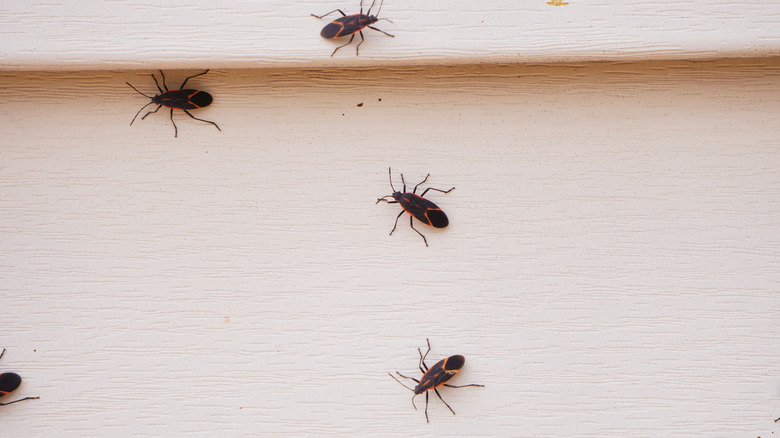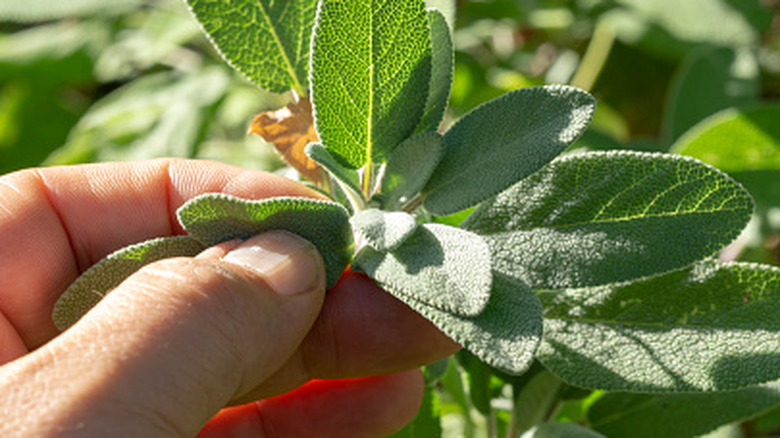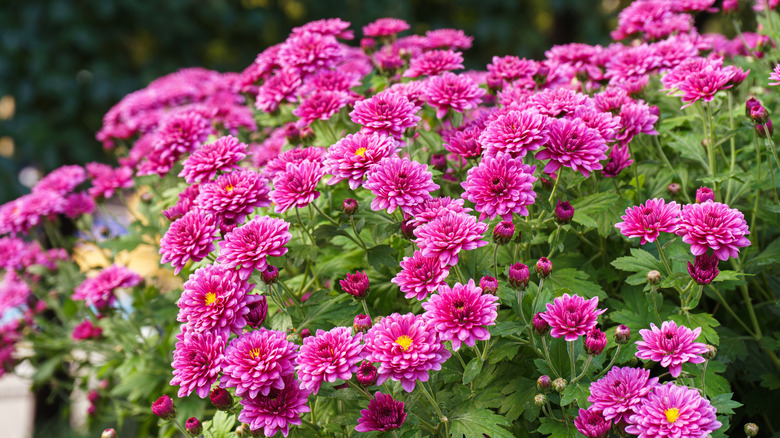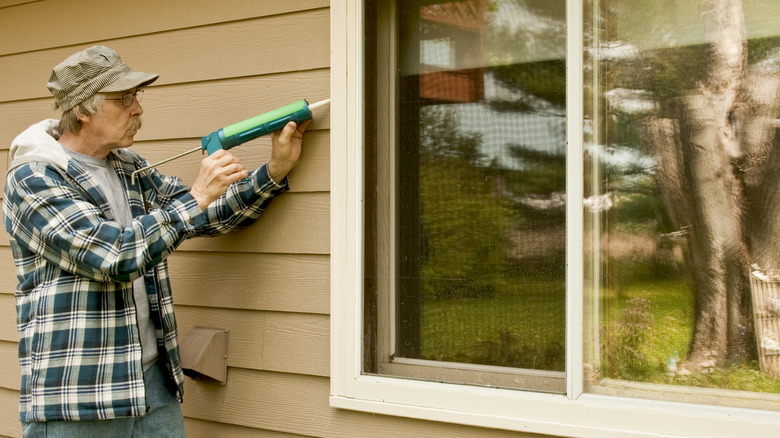Will This Popular Herb Really Send Boxelder Bugs Running From Your House?
Boxelder bugs are pesky black-and-red insects that become especially active in warm seasons. As outdoor temperatures drop, they make a beeline for the cozy warmth of your home to overwinter. Though they primarily hang around boxelder trees (hence the name), you'll also find them loitering near maple and ash trees. And while these bugs pose no direct threat to you or your pets, don't underestimate their potential for annoyance. If you crush them, they emit an off-putting odor that's far from pleasant. Even worse, their fecal matter has a knack for staining various surfaces in your home.
If you have a boxelder bug problem at home, you may have come across sources suggesting the use of sage as a natural insect-fighting champion. Originating from the Mediterranean region, this perennial herb is a member of the mint family. It has bushy growth with fine-haired leaves and can reach 3 feet tall. When you crush sage leaves, the scent can best be described as medicinal, an olfactory signature that enhances your cooking. But can this same, powerful aroma send boxelder bugs packing from your home and yard?
In theory, yes — deterring bugs is one possible way to use sage around your home. This herb contains substances that function as fumigants, repellents, and even insecticides. For the treatment to be effective, however, you'd need to use sage essential oil, which has these compounds in sufficient quantities to act as a boxelder bug repellent. Growing the herb itself, along with certain other plants, may likewise somewhat reduce the risk of a boxelder infestation. That said, setting up physical barriers is the most effective method for controlling these pests.
How to use sage to repel boxelder bugs in and around your home
If you'd like to try treating an indoor boxelder infestation with sage, you'll first need to either buy or make your own clary sage (Salvia sclarea) essential oil. This extract contains linalool and estragole, both effective insect deterrents. Linalool a type of terpene alcohol found in certain aromatic plants. This compound has attributes that bugs find intolerable and is even toxic to insects. Meanwhile, estragole is an anise-scented liquid that serves as a natural beetle repellent, according to the U.S. Environmental Protection Agency (EPA).
Once you have the essential oil on hand, fill a spray bottle with 1/3 of a cup of water, 1/3 of a cup of witch hazel extract, and 50 drops of the clary sage oil. Now, use the spray to treat indoor areas where the bugs congregate. Note that the effectiveness of this method is significantly diminshed outdoors, where linalool quickly dilutes with the atmosphere and loses its potency.
To keep boxelder bugs at bay in the yard, consider planting sage in your garden, preferably immediately around the perimeter of your home's foundation. The strongly scented herb will create a natural barrier that may encourage the bugs to look elsewhere for shelter. However, note that boxelder bugs are capable flyers who can easily cover miles of distance on their wings. Can they fly over the sage barrier to find a warm, sunny spot the wall of your house if they really want to? You bet they can.
Other natural ways to keep boxelder bugs away from your home
Wondering what other scent keeps boxelder bugs away? Much like sage, there are other herbs that may work as a mild natural boxelder deterrent. Lavender and clove are excellent contenders, but as is the case with sage, you'll need their essential oils. Chrysanthemums can also work as an effective deterrent, and they're actually used in the production of pyrethrin, a pesticide known to be effective against boxelder bugs. Extracting and using essential oils can be tedious and expensive (since you'll need the right equipment), but you can try growing these plants in your landscape as part of a broader prevention strategy that makes your property less inviting to these bugs.
While not exactly natural, laundry detergent comes in handy as a mild yet effective boxelder insecticide. Mix 1/2 a cup of laundry detergent with a gallon of water and spray the mixture onto the bugs to quickly kill them. Note that this method will not work as a long-term solution — it will only dispatch the bugs that are already present.
If the insects have found their way into your home, use a soap-and-water mixture to create a trap for them. Make sure the affected room is dark. Then, fill an aluminum pan with water and mix in a bit of dish soap. Situate a bright light above the tray and let the contraption go to work. The bugs will flock to the light then quickly die after falling into the soapy mix.
How to get rid of boxelder bugs for good
Sage, along with other herbs, offer a natural way to keep boxelder bugs away from your home. But these tactics alone will not protect your home from the pests — not unless you also put up physical barriers to make ingress as difficult as possible. To start, identify all the possible points of entry the bugs can use to get indoors. If any door or window screens are broken, install new ones or fix them. Likewise, make sure all the exterior doors have thresholds and sweeps to make crawling under them impossible. Any cracks in the foundation, along with gaps around windows and penetrations where utilities get into the house should be caulked. If the gaps are particularly large, use expanding foam sealants to close them off.
If your home has a brick, stone, or stucco exterior, cracks in the material can serve as entry points. Find these cracks and seal them. Likewise, seal off joints between different materials or different planes (i.e. vertical and horizontal). Crucially, make sure you set up these barriers well before boxelder bugs start making their way indoors; ideally, by mid-August. If you live in a particularly old home with vinyl siding, there are too many exterior gaps, and you won't be able to seal enough of them to keep the bugs out.



